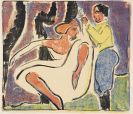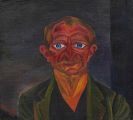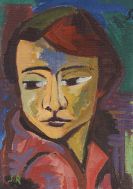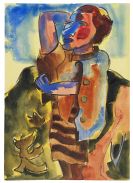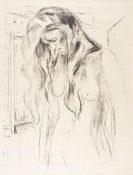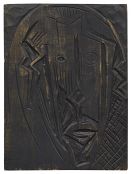
Wolf Röhricht
Liegnitz
1886 -
München
1953
At his parents' wish, Wolf Röhricht began to study law in Munich and even took his doctorate in jurisprudence in Berlin in 1915. However, he was preoccupied with art at the same time, studying painting under Heinrich Knirr and making friends with Waldemar Rösler.
Wolf Röhricht's travels to study art also took him to Paris, where he studied at the Académie Julian under Bonnard and Vuillard.
In 1913 Wolf Röhricht joined the "Free Secession" in Berlin, showing work at the group's exibitions from 1914. After the first world war Röhricht was on the board of directors of the Munich Secession, where he played a decisive role in shaping the German art scene. The Berlin "Nationalgalerie" was the first museum to buy works of Röhricht's.
During the 1920s and 1930s Wolf Röhricht again travelled extensively, to France, Italy, Scandinavia, Tunisia and Egypt. He captured the diverse impressions he received on his travels in oil paintings, lithographs and watercolours.
From 1926 Röhricht taught at the school run by the Association of Women Artists in Berlin. After 1935 his work was removed from museums because it was classified as "degenerate".
Much of Röhricht's work was stored before the second world war ended in the Kuchelberg Stadtschloss near Liegnitz, where it was lost. In 1945 Röhricht left ruined Berlin for Garmisch-Partenkirchen and later moved to Munich, where he continued to paint.
Wolf Röhricht was the only German painter to show work at the international exhibition mounted by the Carnegie Institute in Pittsburgh, PA, in 1950. There he was extolled as one of Germany's top fifteen painters.
From 1948 until his death on 29 September 1953, Röhricht was a member of the board of directors of the Munich "Haus der Kunst". A painter who belonged to the "lost generation", Wolf Röhricht bequeathed a diverse legacy, focused on portraiture, industrial scenes and landscapes.
Would you like to sell a work by Wolf Röhricht?
Infos for seller
